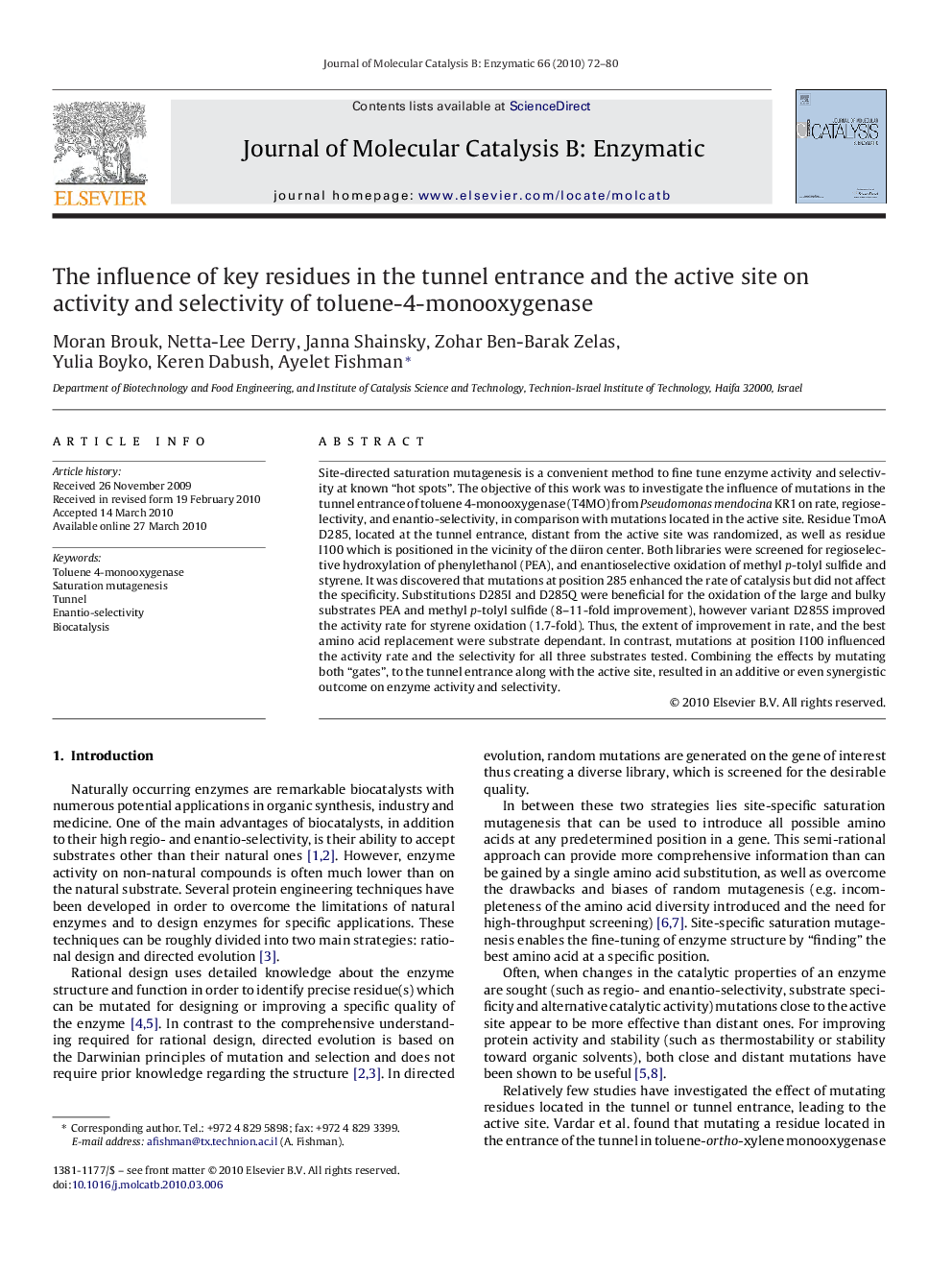| Article ID | Journal | Published Year | Pages | File Type |
|---|---|---|---|---|
| 70402 | Journal of Molecular Catalysis B: Enzymatic | 2010 | 9 Pages |
Site-directed saturation mutagenesis is a convenient method to fine tune enzyme activity and selectivity at known “hot spots”. The objective of this work was to investigate the influence of mutations in the tunnel entrance of toluene 4-monooxygenase (T4MO) from Pseudomonas mendocina KR1 on rate, regioselectivity, and enantio-selectivity, in comparison with mutations located in the active site. Residue TmoA D285, located at the tunnel entrance, distant from the active site was randomized, as well as residue I100 which is positioned in the vicinity of the diiron center. Both libraries were screened for regioselective hydroxylation of phenylethanol (PEA), and enantioselective oxidation of methyl p-tolyl sulfide and styrene. It was discovered that mutations at position 285 enhanced the rate of catalysis but did not affect the specificity. Substitutions D285I and D285Q were beneficial for the oxidation of the large and bulky substrates PEA and methyl p-tolyl sulfide (8–11-fold improvement), however variant D285S improved the activity rate for styrene oxidation (1.7-fold). Thus, the extent of improvement in rate, and the best amino acid replacement were substrate dependant. In contrast, mutations at position I100 influenced the activity rate and the selectivity for all three substrates tested. Combining the effects by mutating both “gates”, to the tunnel entrance along with the active site, resulted in an additive or even synergistic outcome on enzyme activity and selectivity.
